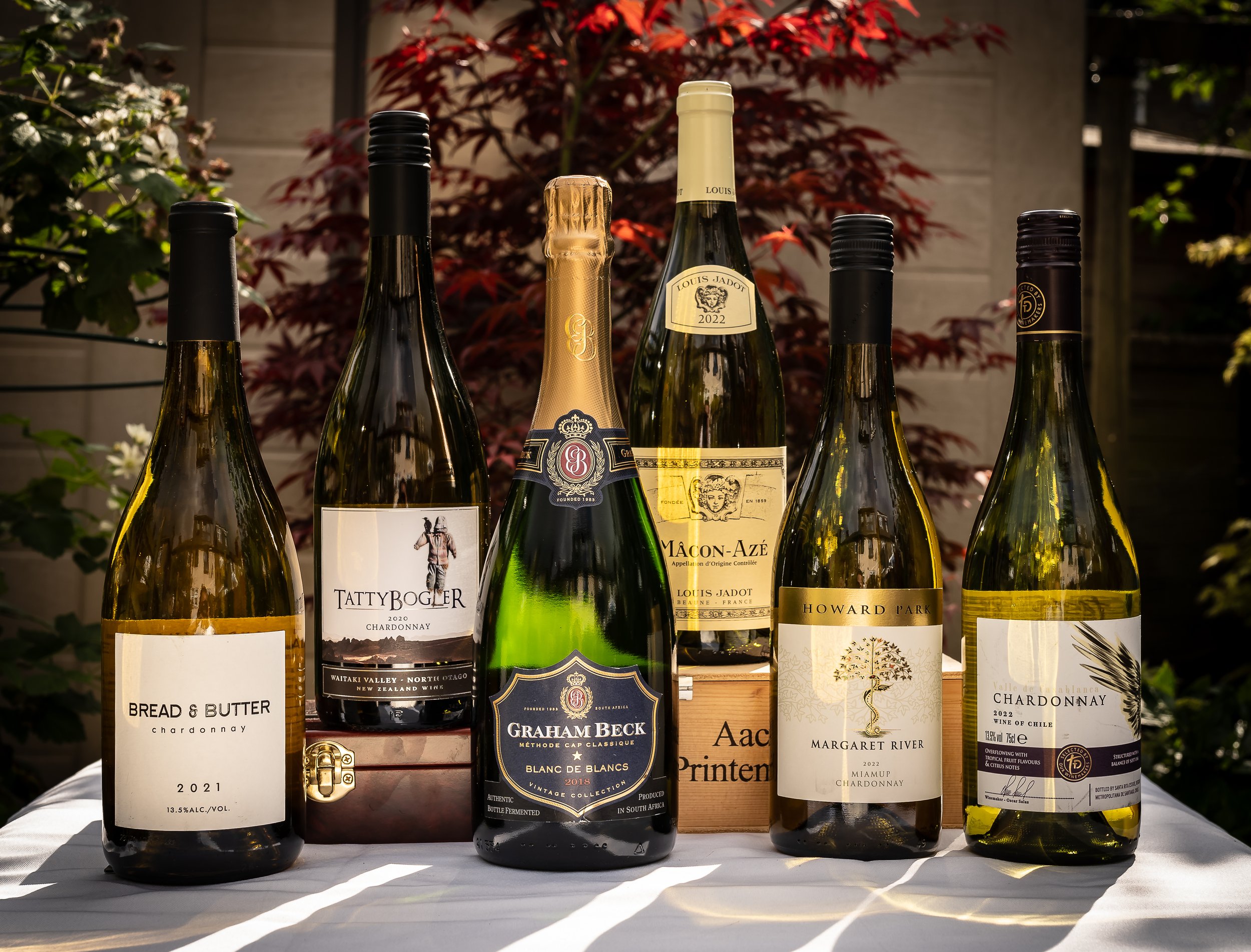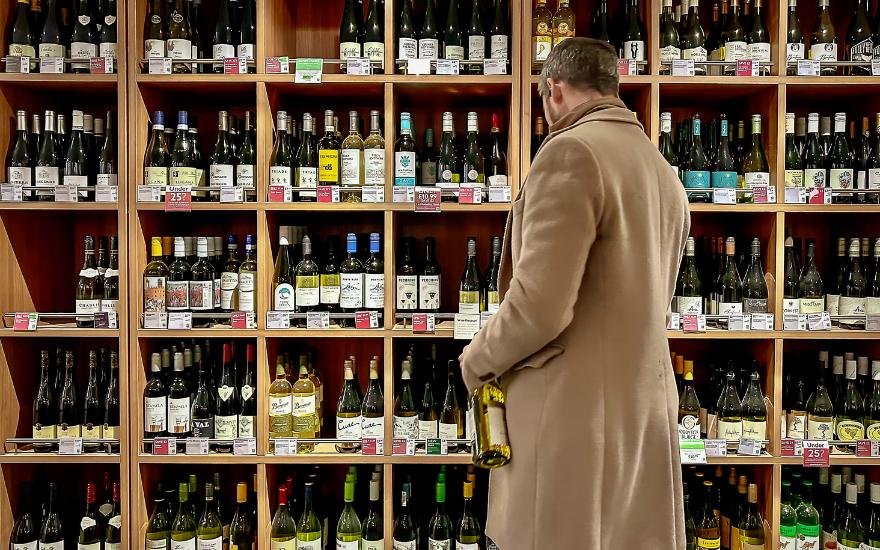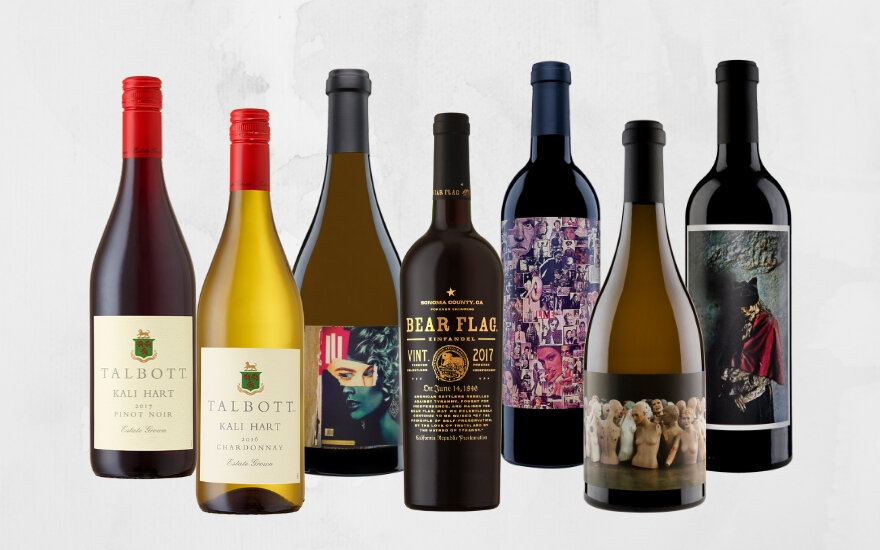Image credit: Will Wong
Which of the following best describes you?
Always bring a Chardonnay.
Anything but Chardonnay.
Albariño, Bacchus or Chenin Blanc.
Assyrtiko Baby.
Have you met anyone who said they hate Chardonnay but love Chablis and Champagne? Well, Chablis is 100% Chardonnay and Champagne except Blanc de Noirs is likely to be a blend containing Chardonnay. Love it or hate it, Chardonnay is everywhere on wine shelves. It is a versatile grape that grows in cool, moderate and warm climates. With different winemaking techniques, Chardonnay comes in a broad range of dry white wines, from high-volume brands to premium wines that can age for decades when stored correctly.
Besides Chablis further north, Burgundy from north to south between Dijon and Lyon in eastern France is where Chardonnay began. In fact, the grape takes its name from the village Chardonnay in the Mâcon region; except you won’t see Chardonnay on the labels of Burgundian whites. Then there is the rest of the world from America (California, Oregon and Washington State) to England, Argentina, Chile, South Africa, Australia and New Zealand. Some wine enthusiasts even name their daughters Chardonnay. Chenin or Cabernet have a long way to go in naming rights.
These used to be the principal versions of Chardonnay: the limestone, flinty and steely Chablis, and those judiciously oaked but still restrained Bourgogne whites; to the big, buttery and oak in your nose New World contestants primarily from Australia and California in the 1980s. Fashion comes and goes. If anything, there seems to be a convergence between styles. Many Australian and Californian Chardonnay now gravitate towards the Burgundian style. Clare Valley Chardonnay in South Australia mimic Burgundy in everything, except for their different climate and terroir.
With differences in terroir, climate and winemaking styles, let’s take a wine trip around the world from Chile to Australia, then Burgundy, California, New Zealand and finish our Chardonnay expedition in South Africa.
Sainsbury’s Taste the Difference Chilean Chardonnay 2022
Image credit: Will Wong
Founded in 1880, Santa Rita Estate's vineyards in the Casablanca Valley region are 500 metres above sea level close to the Pacific coast, with cooling sea breezes and morning fogs helping Chardonnay grapes to ripen slowly. This microclimate results in high acidity with intense fruit and flavours, all essential to make good wine.
This Chardonnay charms with a citrusy and tropical fruits nose, think bananas and even a hint of almonds. It’s medium-bodied with fresh acidity well balanced with spicy oak. Try it with pan-fried fish or creamy pasta dishes. Really good value for money.
Size: 750ml
ABV: 13.5%
Find here: £8.50 (Buy 6 and save 25% discount available until 28th May)
Howard Park Margaret River 2022 Miamup Chardonnay
Image credit: Will Wong
Located 300km south of Perth in Western Australia, set between the tranquil waters of Geographe Bay and the rugged Cape Leeuwin, you will find Margaret River, one of the world's premium and most isolated winemaking regions. With ocean on three sides, Margaret River is blessed with a Mediterranean climate of warm days and warm/cool nights. Cooling sea breezes from the southern Indian Ocean help to moderate temperatures and slow ripening; giving lower yield but premium quality grapes.
Howard Park has been a pioneering West Australian winery since 1986, deploying multisite sourcing to create a consistent style across its product range. Beyond its green apples and mineral palate, the use of fine grain French oak created a layered, flavoursome and complex wine with a touch of spice, and creaminess. It can be cellared for 2-3 years, and is best served as a gastro wine with poached chicken, roast pork or even pickled vegetables and rice noodles, topped with crispy XO prawns. Perfect for summer evenings.
Size: 750ml
ABV: 13%
Find here: £13.99 (Buy 6 and save 25% discount available until 4th June)
Bread & Butter Chardonnay 2021, Napa Valley, California USA
Image credit: Will Wong
The vines are planted in deep, moist soils in the northern interior of California, where the climate is cooler due to the influence from the Sacramento delta.
It tastes exactly what it says on the label: Big Buttery or Big Bad Boy depending on your affection for or aversion to new oak. After partial malo-lactic conversion, a process that gives the wine its buttery character while retaining good acidity, it is then aged for 5 months using French and American oak.
Lush tropical fruits, pineapple and coconut with upfront toasted brioche from start to finish. Whilst it could overpower seafood or delicate white fish, it might work with Cantonese style wok-fried lobster, tarragon chicken or chargrilled pork chops. It needs big flavour food to complement the distinctive big personality. Not for the faint-hearted! However, many modern Californian Chardonnay have much more restrained oak and do not taste like this.
Size: 750ml
ABV: 13.5%
Find here: £13.50 (Buy 6 and save 25% discount available until 28th May)
Louis Jadot Mâcon-Azé 2022, Beaune, France
Image credit: Will Wong
The only Burgundy in our world tour selection. Established in 1859, Maison Louis Jadot now owns over 60 hectares of vineyard, many of them premier and grand cru, and in Jacques Lardière has one of the most respected winemakers working today. Lardière famously said: ‘To some extent we can impose style on a wine in the cellar, but we can’t impose character, and we can’t impose quality either. They come with the vine and terroir.’
The Chardonnay used here is grown around the tiny village of Azé, northwest of Mâcon in southern Burgundy. It is also the only Chardonnay here with no oak used, letting the dry, crisp and flinty character with pear and green apple speak for its terroir. It is medium-bodied with an intense long finish.
Size: 750ml
ABV: 12.5%
Find here: £15.99 (Buy 6 and save 25% discount available until 4th June)
Forrest Wines, “Tatty Bogler” 2020 Chardonnay, Waitaki Valley, North Otago, New Zealand
Image credit: Will Wong
Otago’s early Scottish settlers used scarecrows or ‘tattyboglers’ as they were called, to protect their precious crops from the hungry and unfamiliar New Zealand birdlife.
Central Otago on the South Island of New Zealand is renowned for premium Pinot Noir grapes. This Chardonnay produced in Waitaki Valley, a smaller wine region cocooned by mountains is the southern-hemisphere take on Chablis.
This is fermented in French oak and has explosive aromas of lychee, pastry and nutty brioche. When you take the first sip, it’s a real surprise with refined citrus and quince flavours leading into a much leaner and chalky finish. Try it with poultry, pork, meaty white fish or creamy cheese.
Size: 750ml
ABV: 13.5%
Find here: £19.99
Graham Beck Blanc de Blancs 2018, Robertson, South Africa
Image credit: Will Wong
Multi-award winning ‘Méthode Cap Classique’ (made in the Traditional Method like Champagne) sparkling wine crafted from hand selected Chardonnay on the Graham Beck Robertson estate in Western Cape with its naturally limestone-rich soils. Only the highest quality juice (tête de cuvée) was selected for fermentation.
It spends 48 months on lees before disgorgement and bottling. Its lemon-lime citrus freshness is underlaid with biscuity richness. Bubbles that tinkle with elegance and finesse. These wines have even been sipped by the likes of the late Nelson Mandela and President Barack Obama!
Size: 750ml
ABV: 12%
Find here: £16.99
If you love Chardonnay, we hope to have introduced you to some you have not tried. If you hate Chardonnay, why not give the unoaked Burgundy or South African sparkling Blanc de Blancs a chance? The bottle looks classy at any dinner party, and is budget friendly without compromising on quality. Cheers!
By Will Wong




























